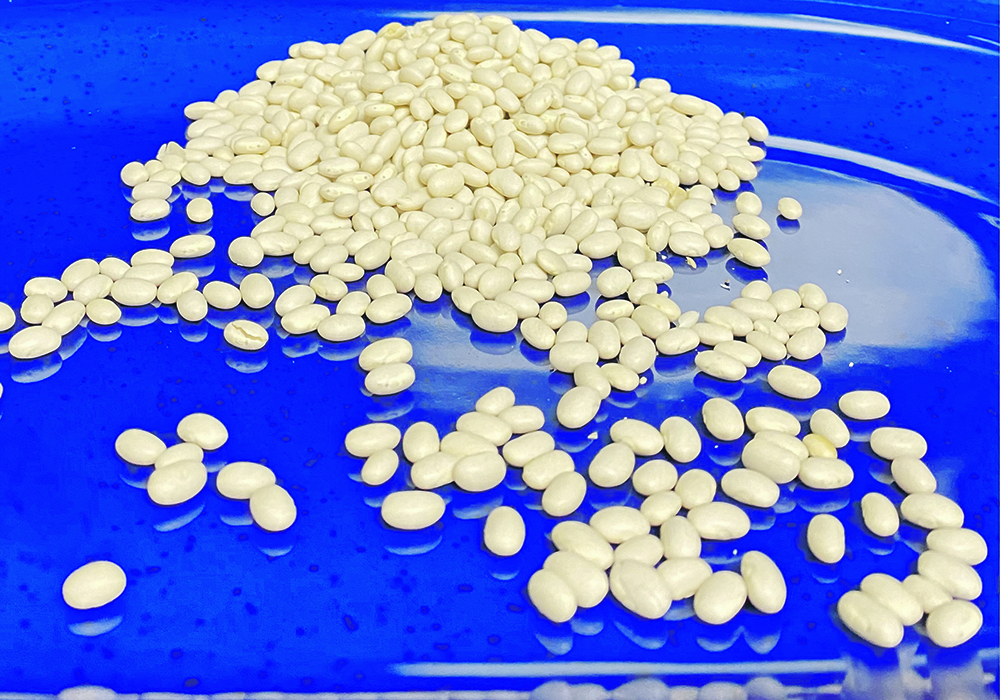Dry bean price outlook hinges on carryout

Statistics Canada expects 100,000 tonnes to be carried over from 2020-21, but market analysts think it will be smaller
Chuck Penner said the “ultimate question” for the Canadian dry bean price outlook is what will the carryout be from the 2020-21 crop?
Statistics Canada believes it will be slightly more than 100,000 tonnes, which would result in ample supplies for the current crop year.
Production is way down this year but that level of carryout would create a total supply of 489,000 tonnes of beans, which would be well above the typical crop of around 400,000 tonnes.
“I’m not entirely convinced about these supply numbers, largely because of price behaviour in the last little while,” Penner told delegates attending the 2021 virtual Pulse and Special Crops Convention.
Posted bids for navy and pinto beans in Canada were around 49 cents per pound when Penner delivered his presentation on Sept. 8 and they appeared to be climbing higher. Actual bids were likely a lot more than that.
In the United States, where there is much better pricing information, bids were around US45 cents per lb. for pinto and black beans and 40 cents for navies. All three types appeared to be heading towards the 2011 highs of about $50 cents.
Keven Sawchuk, senior pulses merchandiser with Viterra, agreed with Penner’s assessment of the market.
“Maybe (supplies) aren’t as plentiful as some of the statistics might suggest,” he said.
Statistics Canada is forecasting 325,000 tonnes of Canadian production in 2021, down 33 percent from the record set last year.
In the U.S., black bean acres are down 20 percent from last year, pintos dropped 19 percent and navies fell 12 percent.
Crop ratings are way below average with less than 30 percent of the U.S. crop rated good to excellent.
The U.S. Department of Agriculture is forecasting an average yield of just below 1,700 lb. per acre, the worst since 2006.
“I’m wondering if the yield numbers are still overstated, especially in the western states,” said Penner.
Mexico appears set to harvest a summer crop of 750,000 tonnes, which would be slightly below the average of 800,000 tonnes.
Argentina could be harvesting a record crop of 750,000 tonnes, which would help service Latin American demand.
But Sawchuk said there are significant challenges in other key global suppliers like Ethiopia, Myanmar and China.
Five years ago, China was a big bean exporter. These days it has become an importer of black beans and navy beans.
“That has a major impact on global markets,” he said.
Sawchuk figures global bean supplies will be extremely tight at the end of 2021-22, with perhaps a paltry two percent global stocks-to-use ratio.
He still anticipates that North American supplies will last well into the new crop year despite the short crop, partially because high freight rates and the global container crunch will keep exports in check.
Cindy Brown, president of Chippewa Valley Bean, said buyers are being confronted by higher-than-usual bean prices, sky-high freight rates, rising costs of steel for canners and increased labour costs.
That may put a damper on demand.
But Penner said there appears to be no demand rationing occurring yet at today’s prices. If anything, he is seeing a reluctance to sell on the part of growers.
How the market shakes out will depend greatly on whether Statistics Canada’s forecast of about 100,000 tonnes of carryout proves accurate.
If it is, the upside will be curtailed. If it proves to be too optimistic, the previous price highs of 2011 could be within reach.
Source: producer.com

